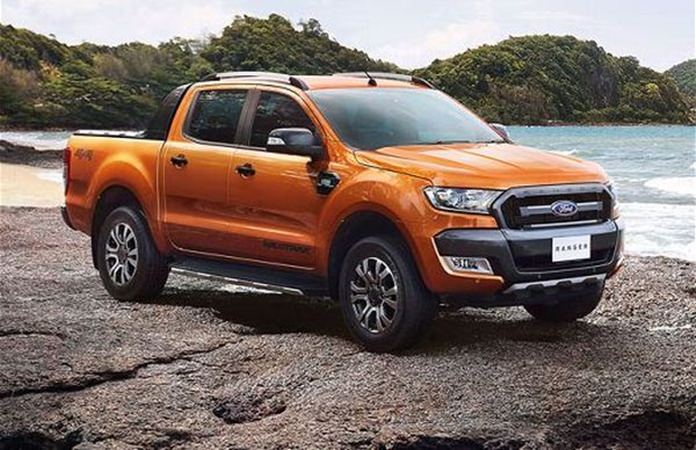
J.D. Power finds Ford and Toyota receive Initial Quality awards in three segments each; Honda receives one
Bangkok – The number of problems reported per 100 vehicles (PP100) by new-vehicle owners has hit a record low this year, with the decline reported across all vehicle component categories except vehicle interior, according to the J.D. Power 2017 Thailand Initial Quality StudySM (IQS).
 Overall initial quality averages 83 PP100 in 2017-down four problems from 87 PP100 in 2016-and is the best performance experienced by the industry since the study was launched in 2000. All problems are summarized as the number of problems per 100 vehicles (PP100), with lower PP100 scores indicating a lower incidence of problems and, therefore, higher initial quality.
Overall initial quality averages 83 PP100 in 2017-down four problems from 87 PP100 in 2016-and is the best performance experienced by the industry since the study was launched in 2000. All problems are summarized as the number of problems per 100 vehicles (PP100), with lower PP100 scores indicating a lower incidence of problems and, therefore, higher initial quality.
Quality is consistent or has improved in all vehicle component categories with the exception of vehicle interior, as new owners report more problems related to the quality of interior materials, as well as squeak or rattle noises from the instrument and door panels and storage compartments. Problems with exterior, however, remain the most frequently reported compared to other problems measured in vehicle component categories.
“As car manufacturers are competing more fiercely to preserve and increase their market share in a stagnating market environment, product quality improvement clearly is an area for focus,” said Siros Satrabhaya, Country Manager at J.D. Power. “It is also gratifying for new buyers to receive better designed and better built vehicles at a similar price. The shift in sources of dissatisfaction toward usability issues is also noteworthy, particularly in relation to vehicle interior, which has become the second-most-influential component category regarding overall satisfaction with initial quality this year, after driving experience.”
Those customers who experience fewer problems with their vehicle have stronger intentions to keep their vehicle for longer – the study finds that owners who expect to keep their vehicle for more than 5 years experience just 79 PP100 on average compared with 103 PP100 among owners who expect to own their vehicle for 5 years or less. Moreover, the former group is more likely to definitely recommend their vehicle model and brand, compared to the latter group (69 percent and 59 percent vs. 57 percent and 46 percent, respectively).
Following are some of the key findings of the study:
Explanation on operation of features: Owners who received detailed explanations on the operation of their vehicle features at delivery report fewer problems than those who do not (83 PP100 vs. 91 PP100, respectively).
Engine performance: The problem most frequently reported in 2017 in comparison to 2016 is the lack of engine power when turned on for the first time on a given day, after a stop or at low speeds (to 2.6 PP100 in 2017 from 1.4 PP100 in 2016). The problem is one of the top five most frequently reported problems in the 2017 study.
Quality affects loyalty: Loyalty and repurchase intentions are proportional to customer satisfaction with overall vehicle quality. Among delighted owners, 77 percent say they “definitely would” recommend their vehicle model and 67 percent say they “definitely would” repurchase their vehicle brand; among disappointed or indifferent owners, only 42 percent would recommend their vehicle model to others and 30 percent would repurchase the same brand of vehicle.
Study Rankings
Ford receives three model-level awards: for the Everest (56 PP100) in the large SUV segment; the Ranger Hi-Rider X-Cab (80 PP100) in the pickup extended cab segment; and the Ranger D-Cab (60 PP100) in the pickup double cab segment.
Toyota also receives awards in three segments: for the Yaris (76 PP100) in the compact car segment; the Vios (54 PP100) in the entry midsize car segment; and the Corolla Altis (46 PP100) in the midsize car segment.
The Honda HR-V (62 PP100) ranks highest in the compact SUV segment.
The 2017 Thailand Initial Quality Study (IQS) is based on responses from 4,866 new-vehicle owners who purchased their vehicle from November 2016 through July 2017. The study covers 12 different brands that include 76 passenger car, pickup truck and utility vehicle models. The study was fielded from May through September 2017.
The study measures problems experienced by new-vehicle owners during the first two to six months of ownership and examines more than 200 problem symptoms in eight component categories (listed in order of frequency of reported problems): vehicle exterior; engine/ transmission; driving experience; vehicle interior; heating, ventilation and cooling (HVAC); audio, entertainment and navigation (ACEN); features, controls and displays; and seats.





